Once upon a time, there was an Emperor who was quite pleased with himself – Maximilian I. Looking back, he had gained (and lost) lands for his empire through wars, treaties and marriages. His two wives brought him titles and hefty dowries (though he neglected the second wife nevertheless). His son indeed died too young, but his grandsons were destined to be kings. Precious gold coins were embossed with his regal portraits (even though he often ran up enormous debts). In terms of personal recreation, he took great joy in jousting tournaments. Other noblemen had fancy nicknames — such as Charles the Bold and Manuel the Fortunate — and so did he: he was known as Maximilian the (Last) Knight. Well done! He was pleased.
Maximilian I knew how to share his story
Holy Roman Emperor Maximilian I didn’t stop there. He was very keen for his achievements to be widely acknowledged AND not misinterpreted. Therefore, he commissioned the best writers and artists to produce splendid books and flattering woodcuts to promote his version of stories.
His legacy should be learned not just by the book-reading elite but by the peasants, too. Take his Golden Roof and the Court Church in Innsbruck for example — his perpetual glory is still presented in Innsbruck for everyone to admire even 500 years after his death.
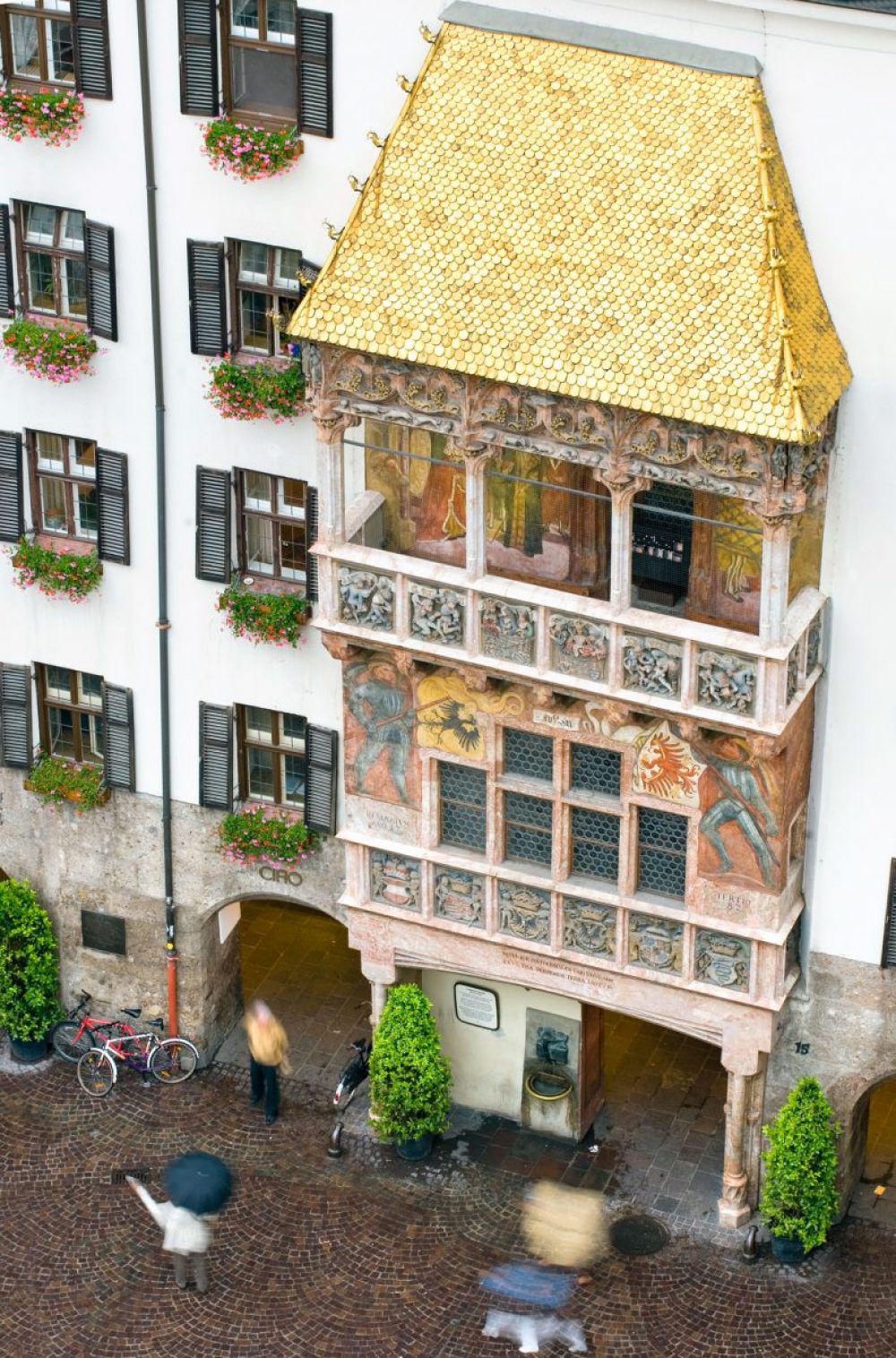
Designed for the emperor to see and to be seen © TVB Innsbruck / Roger Rovira
Innsbruck’s Golden Roof (Goldenes Dachl)
Maybe Maximilian’s first wife, Mary of Burgundy, received the first-ever diamond engagement ring in the world from him, but the splendid Golden Roof was built to mark his wedding with the second wife, Bianca Maria Sforza. Both women are featured in the balcony relief though.
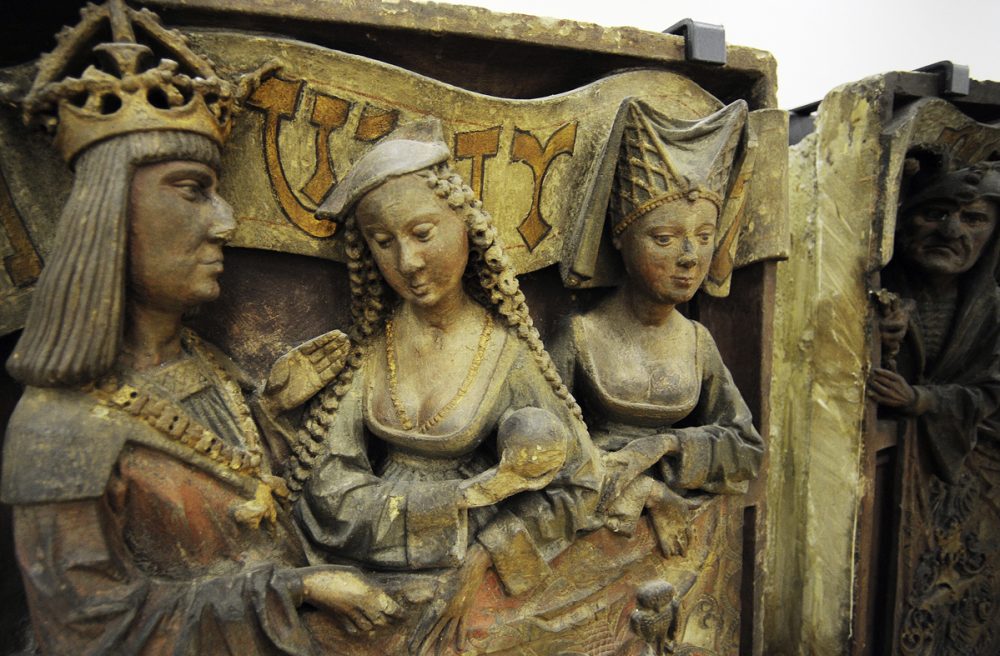
Do you think Mary of Burgundy rather looks away? © TVB Innsbruck / Bernhard Aichner
Unfortunately for Bianca Maria Sforza, Maximilian wasn’t really her knight in shining armour. The balcony under the Golden Roof was supposed to be a royal box for the couple to watch jousting tournaments together. However, by the time of its completion, she was almost totally cut out from the emperor’s life.
The Innsbruck Court Church (Hofkirche)

The final wish of Emperor Maximilian I was fulfilled in the Hofkirche, Innsbruck © TVB Innsbruck / Michael Mössmer
Here we can see how Maximilian wanted HIS story to be told through marbles and bronze. Even an Emperor cannot cheat death, so Maximilian started envisioning his tomb well in advance to secure his immortality. The master plan consisted of a praying effigy of himself on top of a marble sarcophagus, 28 bronze figures of his relatives, ancestors and idols, in addition to many more busts and smaller statues.
The sarcophagus was to be decorated with marble reliefs showing key events in his life, including the historic moment of Maximilian I meeting Henry VIII of England in France — there is a painting in Hampton Court Palace documenting the very event. In the following year, Maximilian presented Henry a set of most exquisite armour, which was created in Innsbruck.
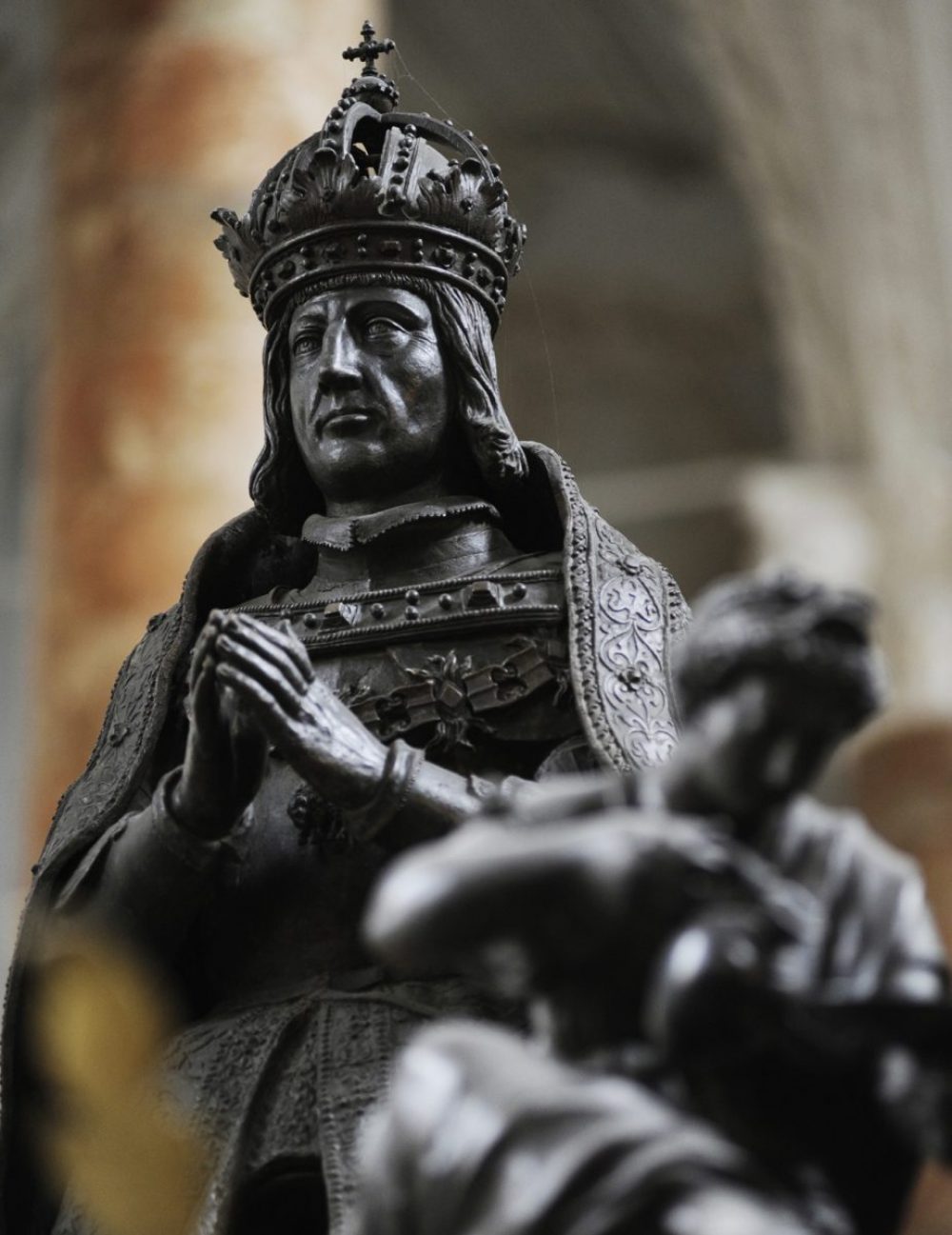
The effigy of Emperor Maximilian I © TVB Innsbruck / Bernhard Aichner
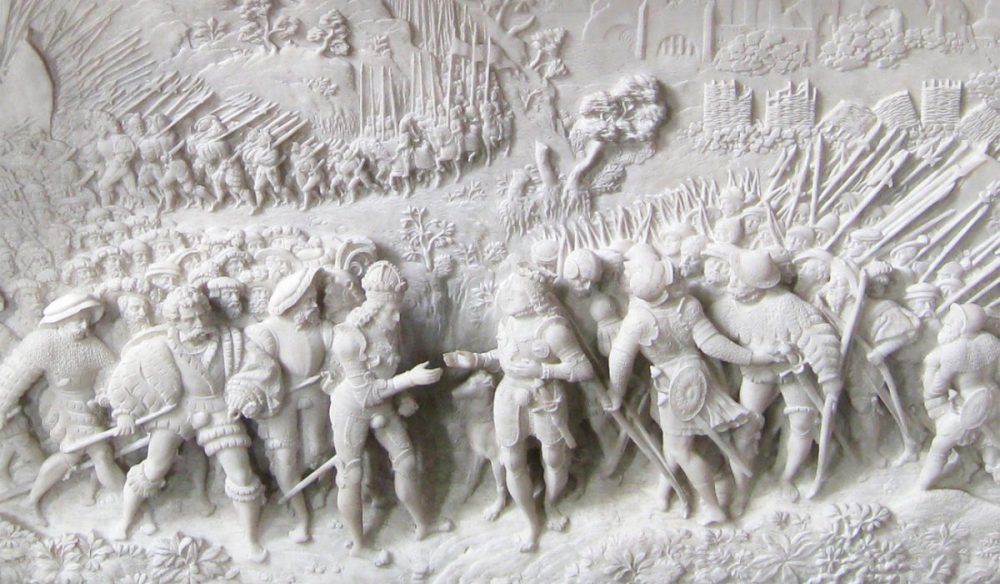
Maximilian I meeting Henry VIII of England in France (Battle of the Spurs, they were on the same side) / Source: wikimedia
Maximilian supervised the preparation of his tomb for 17 years until he passed away during a journey in Tyrol. Only 11 out of the 28 bronze figures were finished at this time. As he wished, he was buried in the chapel of a castle in Wiener Neustadt (in the south of Vienna) but it turned out that this chapel was structurally unable to support all the decorations he wanted to commission. Therefore, his grandson, then Emperor Ferdinand I, relocated the project to Innsbruck and even built a brand new church (the Hofkirche) to house it. The tomb was finally completed 65 years after Maximilian’s death but his remains stayed in Wiener Neustadt. The luxurious tomb in Innsbruck eventually became a cenotaph.
Maximilian the Art Sponsor
Maximilian I saw the power in art and made sure this media served him well. He was the major patron of Nuremberg artist Albrecht Dürer for about seven years. Dürer in return made monumental woodcuts (The Triumphal Arch) and several fine portraits for the emperor.
Among the 28 literally larger-than-life bronze figures in the Hofkirche, ‘King Arthur’ by Albrecht Dürer is probably the most noteworthy (the statues of ‘Theoderic the Great’ and ‘Albert IV’ here were also drafted by him). Compared with other statues in the Hofkirche, his vivid works just scream talent. On the other hand, the inclusion of King Arthur gives a hint of the chivalrous ideals which Maximilian I was deeply fond of.
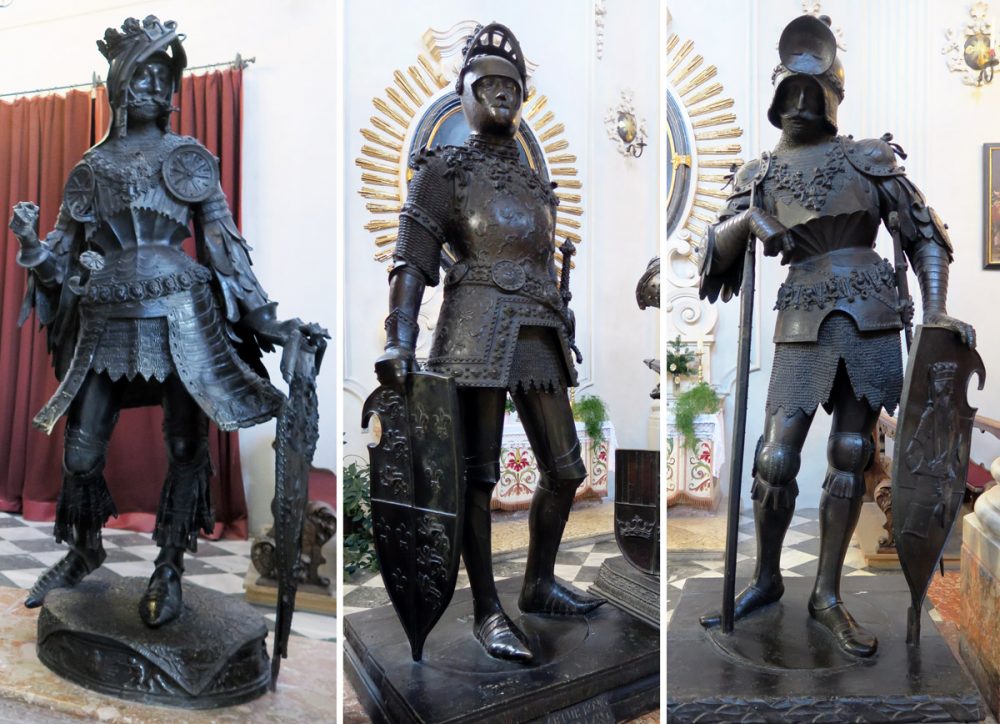
From left to right: Albert IV, King Arthur and Theoderic the Great © Ichia Wu
A New Legend to Be Told: Lightshow Max 500 in Innsbruck
The year 2019 marks the 500th anniversary of the death of Emperor Maximilian I, and there will be a series of events in Tyrol commemorating him. Starting from 20 Nov 2018, the 3D ‘Lightshow Max 500′ goes live on the inner facades of the Hofburg (Imperial Palace) in Innsbruck. The Hofburg was built by Emperor Maximilian I and through Dürer’s watercolors we can see its original late Gothic style.
The magnificent ‘Lightshow Max 500′ tells the story of Emperor Maximilian I in an innovative way, combining the elements of light, sound and drama. Even the emperor would have been thrilled by its wonder! A sneak peak of the “time tunnel” can be found here.
External content is hidden due to privacy reasons. It will be embedded after consent is given in the privacy settings.
The ‘Lightshow Max 500′ is produced by Lichttapete and runs till 20 Jan 2019. Each screening lasts about 20 minutes.
Emperor Max’s Legacy
There were ups-and-downs in Maximilian’s life and he certainly didn’t do everything right. He did however favour Innsbruck over Vienna and left Innsbruck with the most well-known monuments in the region. Just like most locals, he appreciated the mountains around Innsbruck and enjoyed climbing. It was also him who, in 1511, granted Tyroleans the priority of regional self-defence, which lasted till WWI. Therefore, he is probably the most endearing emperor for people in Tyrol.
Other Events to commemorate the ‘Year of Maximilian’ 2019:
The full list of events can be found here.
Don’t forget to follow Emperor Max on Facebook and Instagram, and check out his Instagram Story GIFs here (just search Innsbruck or Emperor Max to find them directly in IG Stories).














